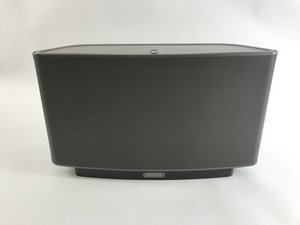Works fine but with intermittent loud pops and cracks
I've been given an old Play 5 which I've given a factory reset and update, and it's now on my S1 network with half a dozen other Sonos products, all of which work fine.
This Play 5 seems to work perfectly, except that every now and then it emits a loud pop or crack noise. These usually come in bursts for a few seconds, and then it can be a few minutes of an hour or so until it does it again. The volume of the noise is the same, irrespective of the volume level of the speaker, it also occurs when the speaker is paused,
Interestingly, it does not come through headphones if they are plugged into it, but it does appear that when headphones are plugged in that the speaker may still be emitting a very low volume pops or cracks.
I've tried all the different app related settings for the speaker, including volume limiting, EQ, Loudness, etc, I've also tried changing the wireless channel and using wired LAN, but nothing changes the issue.
I'd be very grateful if anyone has any ideas as to what causes this and whether it's fixable.
Thanks, Martin





crwdns2934109:0crwdne2934109:0


 1
1 
 397
397  1.5crwdns2936485:0crwdne2936485:0
1.5crwdns2936485:0crwdne2936485:0
Hello again,
I finally got around to taking it apart.
I didn't find anything glaringly obvious, but I thought that the two largest capacitors perhaps looked a little swollen (in the 1st & 2nd pics I've added), so I ordered a couple of replacements and have just swapped them out.
I've just tested the speaker and unfortunately it's still popping intermittently, but at least my surgery hasn't made it any worse!
I took some photos of the boards before I worked on it and thought I'd share them in case anyone is able to spot anything else suspicious.
Any assistance will be appreciated!
crwdns2934271:0crwdnd2934271:0 Martin Abbott crwdne2934271:0
I've done nothing with this for the past couple of months so I thought I'd have another good look over the boards to see if I missed anything but drew a blank.
I reassembled it and tested it again. I have now noticed that the pops are only on the right hand side speakers and they come in pairs: the first results in the higher frequencies being lost: it's hard to tell, but I think the small RH tweeter falls silent until the it pops again, when the full range of sound returns.
I hope this bit of info might help suggest where the fault may lie as I am reluctant to throw the speaker away.
Thanks in advance
crwdns2934271:0crwdnd2934271:0 Martin Abbott crwdne2934271:0